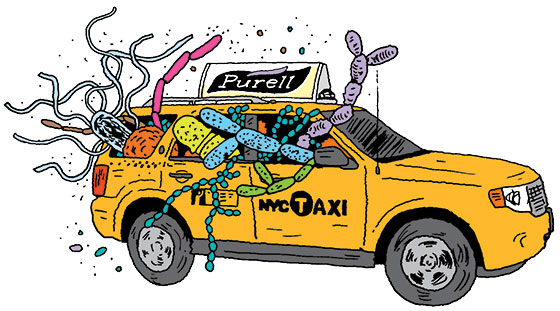
In any given week, your average cab sees hundreds of butts sliding across its seats and hands grubbing up its doors and windows. To find out just how icky the mobile germ incubators really are—and more pressingly, if you can actually get sick riding in one—we hailed seven taxis at random and swabbed the handles and seats with sterile testing kits, then dropped them off with NYU Langone Medical Center microbiology specialist Dr. Philip Tierno to be analyzed.
The results were as vile as you would imagine: Tierno noted the presence of mold, E. coli, oral organisms (which are found in saliva), and, unnervingly, what was either vaginal or anal yeast. Staphylococcus aureus and staphylococcus epidermidis were also detected on several backseats. (In fairness, Tierno says that most of the bacteria his lab discovered already exists in or on the human body, anyway.)
People may wash their hands after using the bathroom, says Tierno, but lazy or improper cleansing—like not scrubbing well under the nail bed—ensures that nastiness like fecal matter hang around. Similarly, the removal of a tampon can transmit vaginal yeast to hands, thighs, and clothing—all of which helps to explain how it winds up in a cab in the first place.
“People are too cavalier,” says Tierno. “Certain bacteria can cause toxic-shock symptoms, wound infections, or a severe case of diarrhea.” It goes without saying that touching one’s face and mouth upon exiting the cab should be avoided, but Tierno also advises a serious hand-washing as soon as possible. If soap and water aren’t readily available, an alcohol-based hand sanitizer offers the next best form of protection.